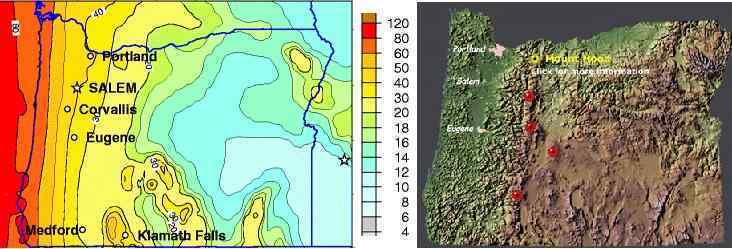
| |
 |
![]()
Oregon is within a belt along the coast that will experience subducting, the coast rising up by a thousand feet or more due to this. Other than the danger of hot earth, this is a good spot, both before and after the pole shift. The climate will become more moderate, and the elevation will be well above the rising seas. Hot earth can be guarded against if one chooses their cataclysm hide-out carefully. Humans during former cataclysms ran to safety from the winds first, as these were the first to arise. Thus they went into the valleys, the low areas, and it is here that the heat from friction in lower plates rubbing is the hottest. The legends report that those seeking shelter in valleys jumped into rivers to cool themselves, only to find the water boiling. Thus plan on a wind and firestorm shelter above the low elevations in broad valleys, and return to the valleys when the danger is past.
ZetaTalk ™
Certainly being in the volcanic belt will put one too close to an active volcano. Safety can be found closer to the coastline, and this affords ocean fishing in the Aftertime, but the dangers of hot earth and mountain building will also be there in the coastal regions. But close examination of seismic activity within Oregon shows a swath of land near the Idaho border, in the current SE portion of the state, where seismic activity is virtually nill, and the land is flat. These are all indications of what we call rock strata that has withstood mountain building in the past, and will during the forthcoming pole shift.
ZetaTalk ™ 2010

Note Cascade and Siskiyou Mountains commentary.
Note Poison Gas Depot commentary.
Note West Coast commentary.
Note San Andreas Fault commentary.
Note San Andreas Slide commentary.
Note West Coast Volcanoes commentary.